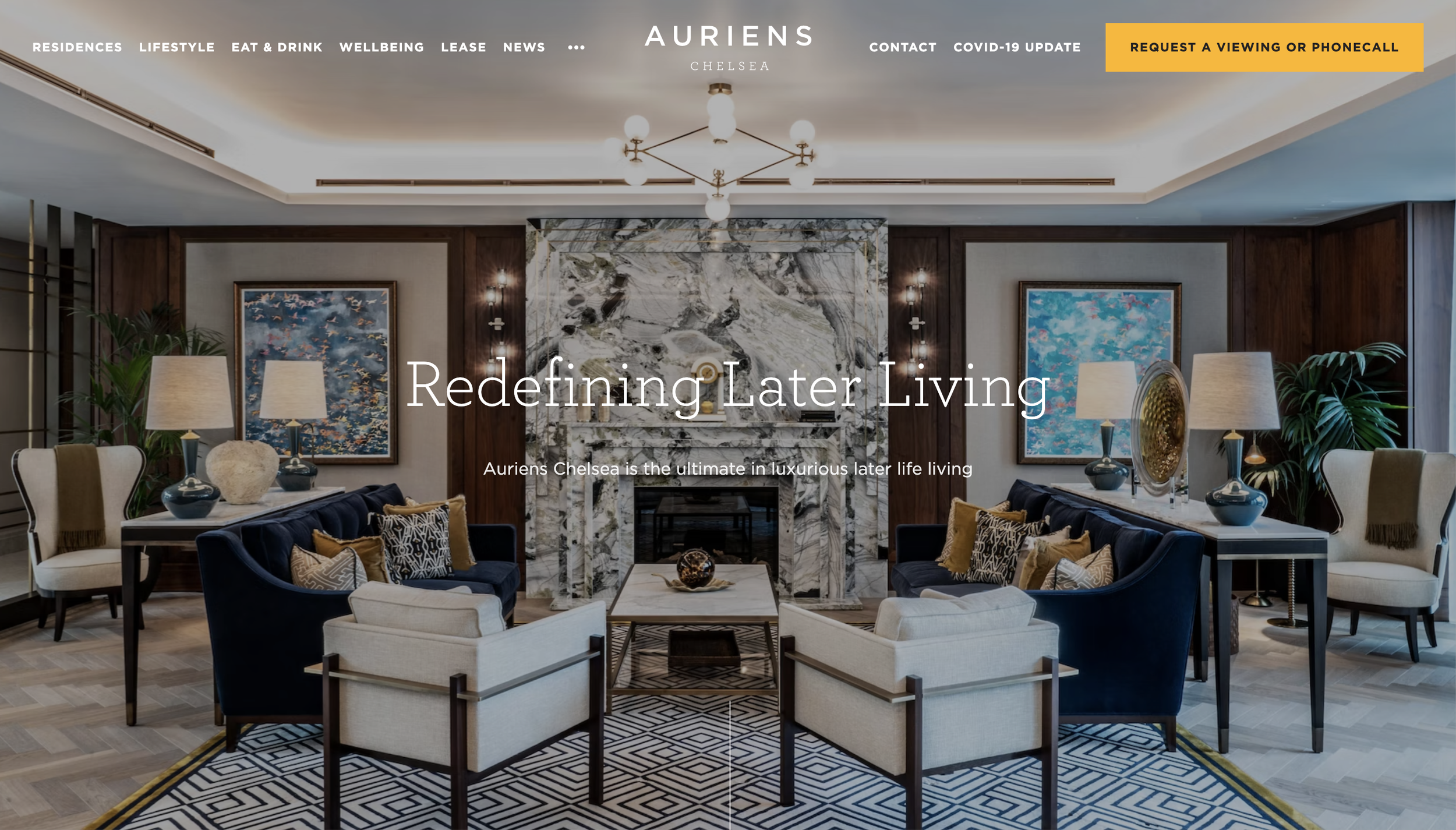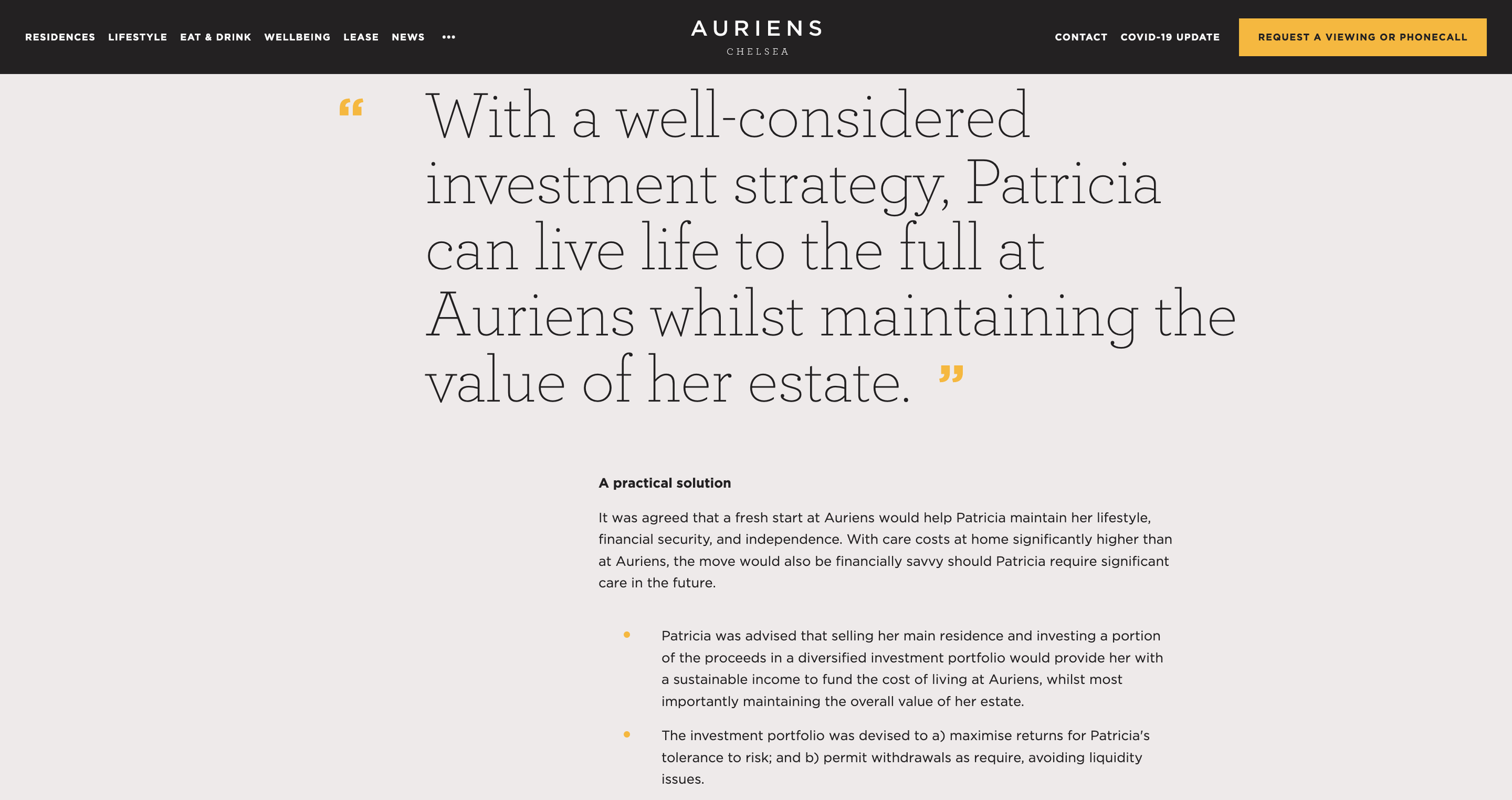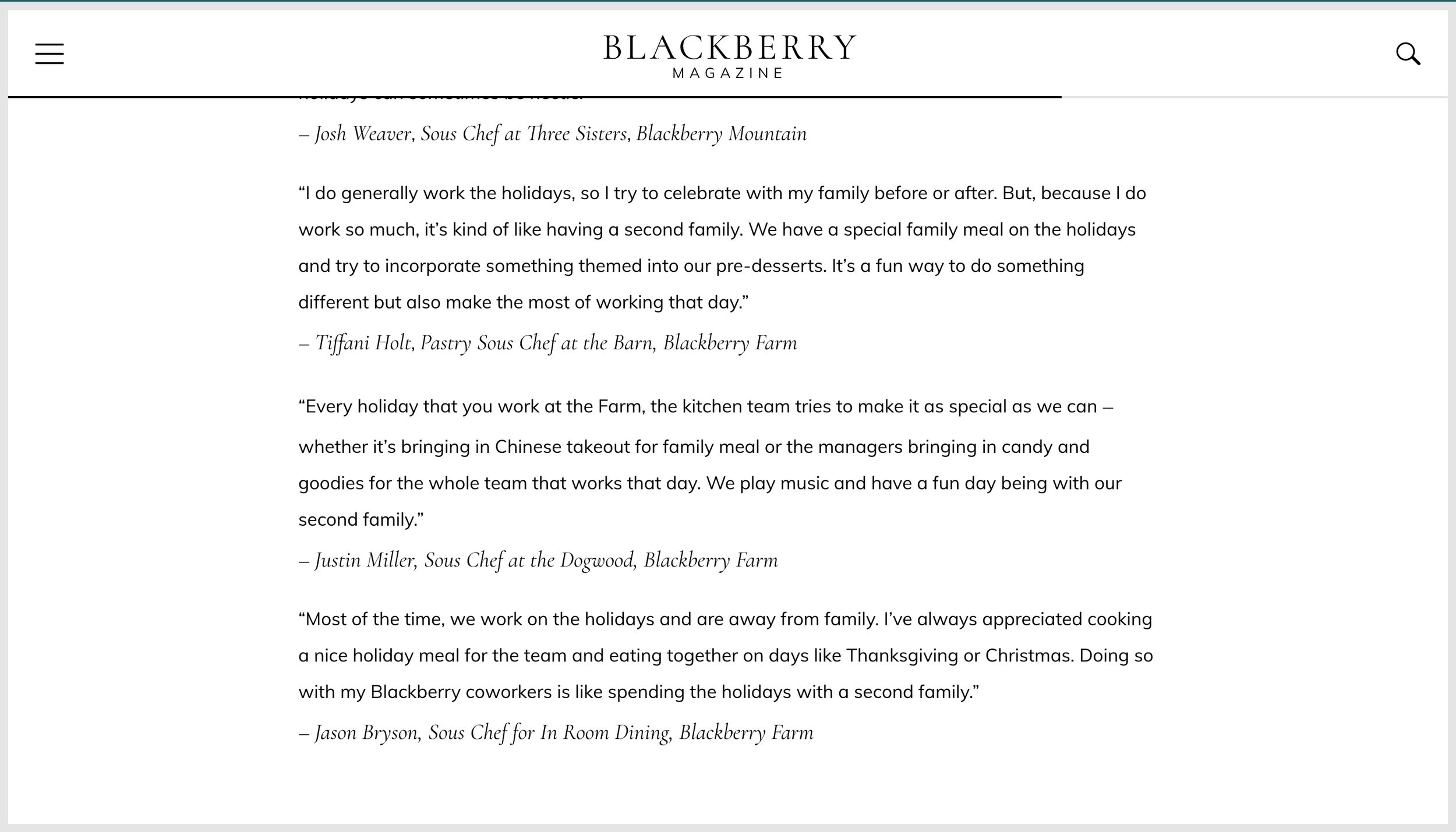12 Content Marketing Ideas For Real Estate Brands (And How They’ll Improve Your Strategy)
Desire House, Austria - concept & image courtesy of Tabarq
Real estate professionals need to consider eye-catching marketing efforts to remain competitive, but coming up with a winning strategy isn’t as simple as putting up a “for sale” sign.
To attract home buyers, renters, or investors, the top real estate pros carry out a large portion of their marketing efforts digitally, via content marketing.
This is because the digital landscape is the most promising frontier in 2025 for landing and nurturing new real estate business relationships. Almost all homebuyers (97%) use online tools in their hunt, and social media ranks as the most popular tool among realtors to get new leads.
Given the current trends, digital marketing is the way to go. In our experience at Proven Partners, getting the most out of your marketing campaigns means using a wide variety of digital content across platforms. We’ve seen successes with captivating landing pages, stunning videography, and clever content targeting strategies powered by new digital tools.
There’s no need to be overwhelmed though, we’ve constructed this guide to walk you through content strategy for real estate websites, blogs, social media platforms, and more. We’ve even included direct quotations from partner insights and measurable case studies to fully paint the picture.
By the end of this digital marketing article, you’ll have an excellent grasp on the industry’s top real estate content marketing ideas and a starting place for your own content strategy.
Whether you decide to work with a partner to bring your marketing strategy to life or start to craft content yourself, this guide will show you how to use 12 winning content marketing ideas to hook potential buyers and keep them coming back.
Content Marketing Ideas for Real Estate, With Examples and Case Studies
Here are 12 content marketing ideas with the latest insights and case studies to fully illustrate their impact. Each approach has its own nuance, so be sure to review each one carefully, and remember to reach out to Proven Partners for personalized advice.
#1: Replace Still Photos with Dynamic Marketing Images
Providing high-quality photos, blueprints, or 3D renders of a property is a must for any real estate content marketing campaign. Traditionally, this means creating a series of static images for the user to browse through, like a slideshow or brochure. While this may have been enough to hook potential buyers in the past, greater technological advancements have led to higher user expectations when it comes to engaging marketing images.
A traditional collection of still images is likely to create an ordinary (or even boring) experience for the viewer. Additionally, this approach is a bit outdated compared to more interactive media options like videos, 3D tours, or dynamic moving images that respond to clicking. Using still photos might also be disadvantageous if you are working with properties that appeal to trend-seekers, boast state-of-the-art design, or capture a more technologically-integrated lifestyle.
Instead of static images, consider incorporating interactive virtual tours, animated images (like .GIF files), or dynamic digital brochures that respond to users’ clicks like one might find in video games or mobile apps. This will add movement to the viewing experience and will also convey a sense of modernity to the property being promoted.
Example: Una Residences
At Una Residences, marketers put extra attention into the dynamic layout of their landing page. Potential buyers will notice engaging features on their website, such as a video of flowing water on their homepage banner.
This website can hook more browsers because the moving water is captivating. It makes people want to dive in and learn more. Before they know it, they’re engaging with more parts of the site by clicking links, viewing property pages, and poking around all corners of the site map to discover what other exciting images are in store.
#2 - Share Your Personal Story
Today’s consumers consider the people they do business with as important as the products themselves. To a certain extent, they are seeking to form a relationship with the brands they interact with. Before signing on the dotted line, customers want to know if there is a personal fit as well as professional fit.
For example, consumers may ask themselves:
Do the brands I want to engage with share my values?
Do these brands understand my priorities and concerns?
Will these brands demonstrate passion for their products and the people they do business with?
Your potential home buyers, renters, and investors want to relate to you, identify with your brand, and appreciate your business relationship. If they have the choice between two real estate businesses offering good deals, they will likely choose the brand that most aligns with their personal values. This is why it is critical to get your potential buyers to understand who you are.
To share your personal values and the values of your business, consider the following:
Create blog posts that describe your company history, your origin stories, and brief bios about the real estate professionals who made the business possible.
Craft social media posts that feature your employees and demonstrate positive social proof. Employee shout outs or testimonials are a great way to show your audience that your brand is one people love to work with.
Include feedback from previous home buyers or renters who have a positive, long-standing relationship with you. Sometimes, their words can paint the most accurate picture of your company’s solid values.
Example: Auriens
At Auriens, marketers take time to outline their personal philosophy and values for potential buyers to read. They place an emphasis on lifestyle and well-being, describing their perfect customers as “people in life who have lived – and are living – full and interesting lives.”
Notice how they include photos and bios of the wellness professionals they associate with. These marketing efforts help potential home buyers to put a face to who they are – literally!
#3: Celebrate Your Clients
Sometimes the best content marketing ideas for real estate aren’t about the real estate at all, but the people who make up the community.
Whether you’ve sold a home, rented a property, or secured an investment, you’ve impacted someone’s life. It might be helpful to invite your clients to share their experiences with you through testimonials, interviews, or public reviews. Marketers can use this client feedback to highlight real personal stories, positive outcomes, and professional business experiences via blog posts, email marketing plans, or social media shoutouts.
For example:
Create a social media post about how a client’s life has improved since buying, renting, or investing with you.
Feature video testimonials on your website that show clients who have found their dream property as a result of working with your real estate business.
Launch a regular email marketing campaign that highlights positive milestones unrelated to your product, such as holiday wishes or celebrating the anniversaries the first time doing business with certain clients.
Example: Serenbe
Serenbe specialises in residences that emphasise real estate sustainability, healthy living, and happy clientele. Notice how Serenbe created a podcast series that celebrates the achievements of their residents. They give their clients a voice, which goes a long way toward growing a positive community that celebrates client happiness. This positive attitude is sure to attract more potential clients who wish to share in such a supportive community.
#4: Provide Practical Advice
Share insights into the topics your potential home buyers, renters, or investors care about.
Providing practical information on topics pertinent to the real estate business will set you up as a trusted authority in the minds of your potential clients. Providing valuable content like this is excellent for lead generation, getting an email address, or getting potential clients to subscribe to your newsletter.
Here are some suggestions for practical content:
Create a blog article that gives advice on mortgages or how to secure a home loan
Create content like a brochure that depicts the best ways to save energy at a specific home
Create an infographic for potential buyers, renters, or investors that teaches them how to accurately assess a property’s value
Create an eBook on buying a first home or keys to real estate investment
Create a photo gallery on design ideas for luxury living
Example: Auriens
As Auriens’ clientele is largely pensioners, they focus on topics that are most relevant to them. These topics include in-home care services, inheritance tax, and cutting costs to maximise retirement savings.
Notice their websites' case studies, which address the common concerns of their clients. One case in particular reviews Auriens approach to maintaining the lifestyle and security of a 78-year-old tenant so she can live life to the fullest.
This post is full of practical advice and evidence of the personalised care Auriens can provide. When potential clients read this post, they will be more likely to trust Auriens’ advice and possibly set up a consultation call to see how Auriens can assist them too.
#5: Location, Location, Location Benefits
Many real estate professionals focus their content marketing campaigns on the properties themselves, but forget to highlight the location benefits of living in a certain area. Creating marketing content that describes these location benefits is sure to hook more potential buyers.
Here are some real estate content marketing examples that highlight location benefits:
Share infographics that detail the insights, facts, and statistics of local schools to engage the families in your audience looking to move to a new neighbourhood.
Create a map of cultural hotspots such as social clubs, shopping corridors, or outdoor excursion sites. It’s a great idea to list the distance (by miles and by minutes) so potential clients can understand the easy access at a glance
Provide a pamphlet on an area’s history, including the shifts in demographics or trends over the years. For example, if an area is experiencing a decrease in the average age of community members, it might signal to young people that more renters and buyers their age are likely to move in. Highlight demographic trends like these to make a location appear more attractive to specific audience members.
Example - Quivira Los Cabos
In this blog post titled the top reasons to invest in Los Cabos real estate, there is little mention of Quivira’s properties. Instead, the focus remains on the location benefits, including topographical information, average seasonal temperatures, and access to beautiful natural features from seasides to deserts.
#6: Boost Your Visibility Through VIP Interviews
When making high-quality digital content to attract new business relationships, it’s not enough to press post and wait for the inquiries to come rolling in. Marketers need to get that content in front of as many potential home buyers and investors as possible. After all, what’s the point of making world-class content if no one is around to see it? The importance of visibility cannot be overstated, and one of the best ways to increase your content’s visibility is by including influencers of all sizes.
A media influencer isn’t necessarily a supermodel on Instagram with one hundred thousand followers. A media influencer can also be a local business owner who engages with their community through regular social media posts.
When your content features local business owners, cultural figures, and community leaders, those individuals are likely to share that content on their own platforms to a wider audience. In other words, promoting someone else can be one of the best marketing tips for promoting yourself.
Example - Blackberry Farm
Blackberry Farm Real Estate offers private ownership in a mountainside resort community famous for its food, wine, hospitality, and adventure.
Notice how their website features articles about breweries in the area and interviews with celebrated local chefs. These local trendsetters help Blackberry Farm get their content in front of more consumers without being intrusive.
#7 Provide Behind-the-Scenes Peeks
Give your audience behind-the-scenes peeks of the development process, interior design insights, or final touches so showcase what went into creating the property.
For example, you might share an on-site moment where one architectural choice was reevaluated for another for a greater effect. By having an expert there to explain why they opted for a more durable and sustainable option, the content showcases how the project commits to exceeding client expectations.
As Colin Hannan, Principal at Proven Partners, explains, “Putting a face behind the project is always valuable. Humanizing developers is crucial because they are often perceived as abstract corporate entities. Highlighting the real people behind the project – dedicated individuals who show that they genuinely care about delivering exceptional experiences – helps build trust, which is the most valuable currency.”
Just review this material insights moment from the Zanzibar Luxury Beach Villas Instagram account to see what Colin means. Highlighting moments like this reveals the care and expertise driving the project forward, while also putting a human face to the team and their commitment to delivering excellence.
Example - Sandbank vıllas
#8 Use Virtual Property Tours
In a sea of static renders and content, clients crave a more exciting visual experience. Something that truly brings the idea of living in the property to life.
This is where 3D renders and virtual tours offer dynamic alternatives, providing a deeper level of interactivity that static images simply can't match. By animating your renders to create a 360-degree navigable tour, your audience can virtually step into the property, helping them vividly imagine themselves in the space
For example, take a look at Sandbank Villas 360 Tour. This immersive experience not only captures their attention, but also makes them remember the property more than other static collateral does. It is the best way to show your audience how a property feels outside of open houses or other in-person visits.
Example - Sandbank vıllas
#9 Highlighting the Neighborhood
When crafting your digital content, be sure to showcase the lifestyle that surrounds your property too.
One popular approach is curating local insight guides that highlight nearby restaurants, cafes, bars, fitness studios, parks, and cultural attractions. Help potential clients imagine their morning coffee spot, evening strolls, or favorite go-to dinner locations, all within reach of their new home.
Another approach is to focus on the unique personality and vibrancy of the locale. This way you’re offering value beyond physical properties or locales; you’re selling the whole lifestyle. These insider tips help potential buyers picture how the neighborhood could become part of a day in the life of their future, making the area feel like home before they even step inside.
This soft-sell approach not only enhances the appeal of the property but also builds goodwill with local businesses, who may reshare your content, amplifying your reach and visibility. Highlighting the charm of the neighborhood demonstrates your commitment to the community, which your prospects will perceive as a virtue.
One great example of this comes from Johari Beach Residences. Their local guide approach is a smart marketing strategy because it provides high perceived value with a lesser degree of effort. In other words, highlighting existing local amenities requires fewer resources on the creativity side but delivers meaningful content that resonates with potential buyers and fosters engagement.
Example - joharı beach resıdences
#10 Create “Before and After” Transformation Stories
Once a project is finished, showing your audience that you can turn promises into reality is a great content marketing opportunity for building trust. By comparing the initial renderings with the final result, you demonstrate your ability to deliver on your commitments.
According to Colin Hannon, “Buyers are sometimes skeptical of renderings, so proving your ability to deliver on promises is a powerful asset. Providing real-world proof builds trust and serves as a valuable reference point for future clients, showing your ability to translate vision into reality.”
To see this type of content marketing in action, look no further than this “Render vs. Reality” post from Atlas, Rose Bay Fortis. This side–by-side style of content reassures potential buyers and investors that what they see in mock-ups is what they will get in reality. New leads can refer to this content for credibility in a real estate company’s ability to deliver.
Armed with this type of content, you will instill a sense of confidence and knowledge into your brand identity, giving potential buyers another reason to reach out and put their trust in you.
Example - FORTIS
#11 Address Common Fears In Your Audience
It’s wise to include content that soothes potential buyers and sellers most common concerns. These worries may be market volatility, financing challenges, hidden costs, or the complexities of property ownership as a foreigner. Demographic research and surveys on your audience can help inform what they are worried about and you can craft your messaging to reassure them.
Providing clear, informative content that tackles these fears head-on helps to build trust and confidence in your brand. By offering solutions or expert advice on navigating these obstacles, you can make your target audience feel more informed and secure in their decision-making process.
For example, this article dives deep into the potential headaches of buying a property as a foreigner in Mauritius so interested parties can feel relieved that there are experts and strategies for getting over any obstacles to making their dreams a reality.
This approach not only helps alleviate anxiety but also positions you as a knowledgeable and supportive partner throughout their real estate journey.
#12 Spotlight client testimonials
Another way to build a positive rapport with new people through online content is by showcasing organic reviews and real words of praise from your existing clients and buyers.
Positive reviews not only validate your services but also help to humanize your brand and build authenticity. When prospects see that others have had a positive experience with you, they’re more likely to feel confident about their own potential experience.
You might want to consider incorporating review platforms like TrustPilot which compile reviews from a variety of sources in an easy-to-read fashion. Be sure to use these client testimonials in creative and visual ways across different platforms to get the most out of them.
One example is how Sandbank Villas displays their client reviews right on their landing page so new visitors can see them right away and begin to form a positive impression.
Example - Sandbank vıllas
Why Is Content Marketing Important in Real Estate?
In the real estate industry, as in many industries, having the best product does not always mean that it will reach the widest audience. Content marketing is one way to bridge that gap – getting your high quality real estate projects in front of the right people, even if they have never heard of your company name before.
This content marketing can range from emails to video tours to advertisements on social media accounts. We recommend using a diverse mix of content marketing strategies to amplify your reach and impact.
By creating content that resonates with a certain audience, whether its homebuyers, property sellers, or hotel investors, they will keep coming back for more. For example, if your audience is eager to know the latest trends in single-family homes outside of Chicago, creating relevant email content about that market will encourage that audience to subscribe to your newsletter to learn more and stay informed.
Content marketing on social media allows you to engage an even wider audience defined by their property interests, which could be a specific region, energy efficient design, or budget requirement. These platforms are designed to match audiences with relevant content, such as your posts. The key to retaining these audiences who see your posts is to show off your top insights like neighborhood guides, testimonials, and property market trends.
The upside you can expect to see from creating digital content for the right audiences is a huge increase in qualified lead generation. This is not only thanks to your increased visibility on digital platforms, but thanks to the added trust you build by delivering insights instead of just advertisements. Plus, digital platforms make content easy to share, so your message can spread even further via re-posts or link sharing.
Not to mention, all this comes at an affordable price. Unlike traditional real estate marketing methods, digital marketing ads can reach thousands of people even if you have a modest budget.
In the next section, we’ll break down the actionable steps you can take to put your stellar real estate content ideas into a cohesive marketing strategy.
Developing Your Real Estate Content Marketing Strategy
Defining your content marketing strategy means aligning each piece of content to your larger business goals, engaging the right audience, and using metrics to track your results. This prevents you from wasting your marketing resources on ineffective plans.
To get the most out of your content marketing efforts, be sure to follow these steps:
Perform market research to better understand what your audience wants and what approach might resonate with them.
Determine your brand identity for a consistent message, tone, and approach.
Set measurable goals for your marketing campaign to assess its effectiveness, such as new followers gained, inquiries received, or properties sold.
Align your content strategy with your budget, focusing on creating content that is high-impact for its cost.
Test, re-test, and repeat. Continue to create new content for your audience based on how it performs across engagement, conversions, and other tracked metrics.
These steps are a great way to get started. However, a great strategy often requires time to measure and refine, so don’t worry if you don’t see the results you’d like right away.
Another way to see the desired results, and sooner rather than later, is to work with an experienced partner with all the current content marketing insights. This is where Proven Partners is an invaluable ally.
Black House, Argentine Coast - concept & images courtesy of Tabarq
Why Work with Proven Partners?
At Proven Partners, we bring over 45 years of experience in developing award-winning real estate projects. From Texas to Trinidad, Canada to Colorado, Bali to Belize, we have developed our expertise by incorporating fresh creative vision with measurable commercial insights.
One standout example of our work is the Itz’ana Resort & Residences in Belize, which is the most ambitious real estate project in Belize. We were able to craft a unique brand message and execute a careful marketing strategy to achieve incredible results: Out of 86 luxury villas, 69 of them were sold before the soft opening.
When you work with Proven Partners, you’re gaining a partner that deeply understands the luxury real estate market, with tried-and-true knowledge of delivering results that align with your unique business goals.
Visit our Content Marketing page to take your project to the next level.












































